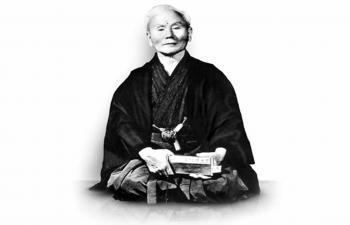- info@rajkotkarate.com
- +91 97269 11902
Shotokan Karate
Shotokan School of Karate
WHAT IS "SHOTOKAN"? The word karate is a combination of two kanji (Chinese characters):
kara, meaning empty, and te, meaning hand; thus, karate
means "empty hand." Adding the suffix "-dÅ" (pronounced "daw"), meaning
"the way/path," karate-dÅ, implies karate as a total way of life that
goes well beyond the self-defense applications. In traditional
karate-dÅ, one is supposed to compete and strive to excel against
him/herself. Today there are four main styles of karate in Japan: Shotokan, Goju-ryu,
Shito-ryu, and Wado-ryu. Shotokan,
Actually Shotokan was the name of his dÅjo, chosen after the pen name used
by Funakoshi to sign poems written in his youth. Shotokan Karate is
characterized by powerful linear techniques and deep strong stances.
It is the style taught at the Tulane Karate Club. Like the word karate, Shotokan is also composed of two different kanji :
Shoto, meaning "pine breeze" and kan, meaning "the
place", thus Shotokan means the place of shoto.

Karate is a Japanese martial art whose physical aspects seek the
development of defensive and counterattacking body movements. The
themes of traditional karate training are fighting and self-defense,
though its mental and moral aspects target the overall improvement of
the individual. This is facilitated by the discipline and
persistent effort required in training. If karate had to be
described in only one sentence, then the most suitable one may arguably
be "You never attack first in karate." This is a maxim of
Gichin Funakoshi (1868-1957), the Okinawan who brought karate to
Japan in 1922, and who is accepted as the father of modern karate.
Precepts of Gichin Funakoshi
- Karate is not only dojo training.
- In Karate, never attack first.
- Don't forget that Karate begins with a bow and ends with a bow.
- One who practices Karate must follow the way of justice.
- First you must know yourself. Then you can know others.
- Spiritual development is paramount; technical skills are merely means to the end.
- You must release your mind.
- Misfortune comes out of laziness.
- Karate is a lifelong training.
- Put Karate into everything you do.
- Karate is like hot water. If you do not give heat constantly it will again become cold.
- Do not think you have to win. Think that you do not have to lose.
- Victory depends on your ability to tell vulnerable points from invulnerable ones.
- Move according to your opponent.
- Consider your opponent's hands and legs as you would sharp swords.
- When you leave home, think that millions of opponents are waiting for you.
- Ready position for beginners and natural position for advanced students.
- Kata is one thing. Engaging in a real fight is another.
- Do not forget (1)strength and weakness of power, (2)expansion and contraction of the body, (3)slowness and speed of techniques.
KATA
In Karate, there are Kata (forms). Most of them are established in China, then introduced to Okinawa (Southern islands in Japan). From old time, Karate players improved their techniques by practising these forms. Technique of Karate can be acquired by practising KATA. Recently, people tend to practice by KUMITE (fighting) to win game, and not to practice KATA. KATA is essence of Karate. In KUMITE, you can play only with combative instinct and quick relaxes without learning the forms and techniques. If someone practices only by KUMITE, he/she will not be able to play Karate over the age of 40. By KATA, you can learn ideal balance, speed and breathing. Today, the era of games, Karate players tend to care how to show their playing style and forms beautifully using KATA.
My purpose of practising KATA places great importance on the mental aspect. I can calm down myself before starting KATA, I try not to strain and relax myself (Zenshin) when I do forwarding KATA, maintaining dynamic status while performing static movement, and maintaining static status while conducting violent attack, to play KATA with senses of fulfilment and fight (Tsuushin) and to end with no idle thoughts, which is very difficult to achieve. (Zanshin) I experienced this feeling only twice when I was competitor in games in the past. I did not notice anyone even audience and judges, and my breathing was perfect in spite of the hard movements. I attained a spiritual state of perfect selflessness and it was great feeling. I practice Karate over 15 years almost every day and every time to achieve this feeling.
From my experience, I found that controlling myself is much more difficult that controlling opponents in the fight. What I want to say is your mind moves and controls your body.
Kumite
Kumite (組手) literally translated means "grappling hands" and is one of the three main sections of karate training, along with kata and kihon. Kumite is the part of karate in which a person trains against an adversary, using the techniques learned from the kihon and kata.
Kumite can be used to develop a particular technique or a skill (e.g. effectively judging and adjusting one's distance from one's opponent) or it can be done in competition.
Types of Kumite
Ippon kumite - one step sparring, typically used for self defense drills
Sanbon kumite - three step sparring, typically used to develop speed, strength, and technique
Kiso kumite - structured sparring drawn from a kata
Jiyu kumite - free sparring
